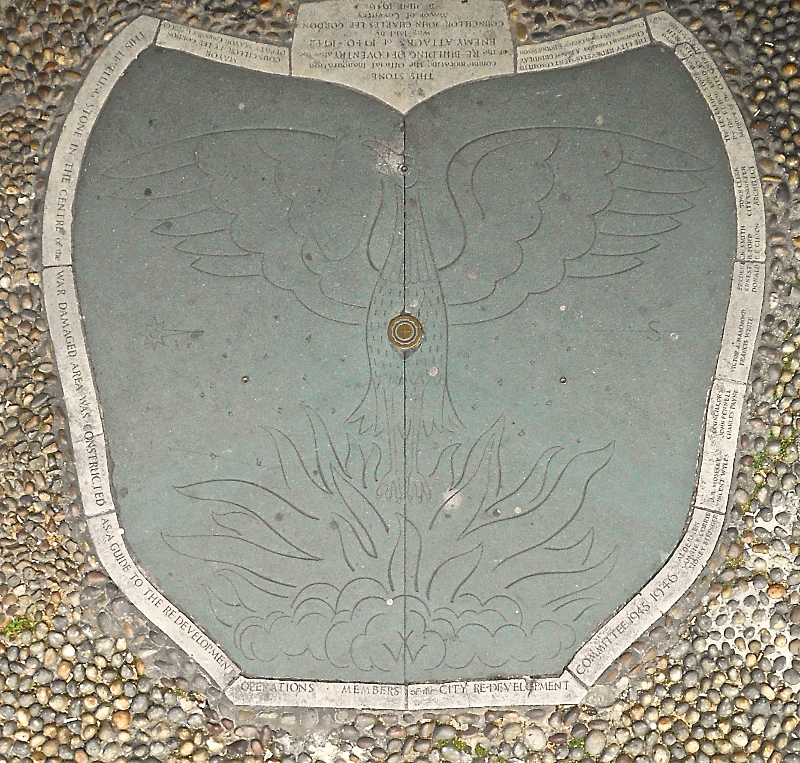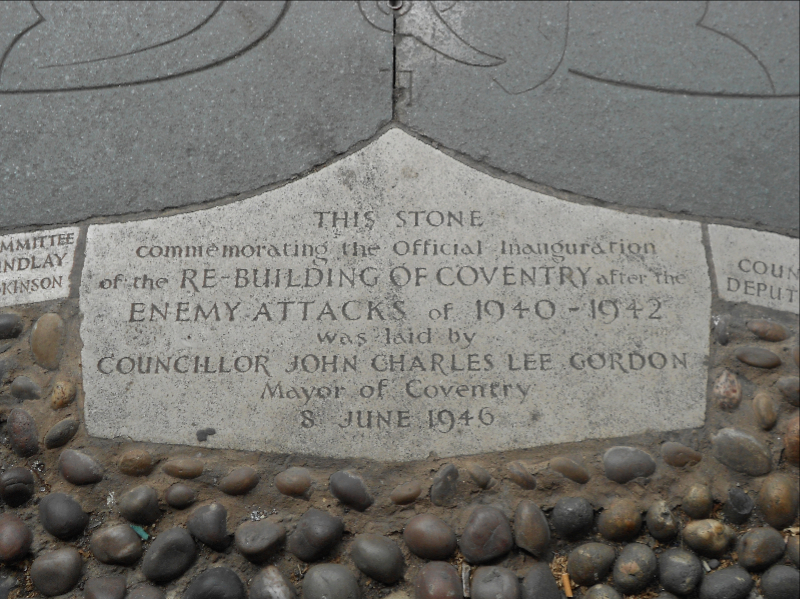Tennant: People of Coventry
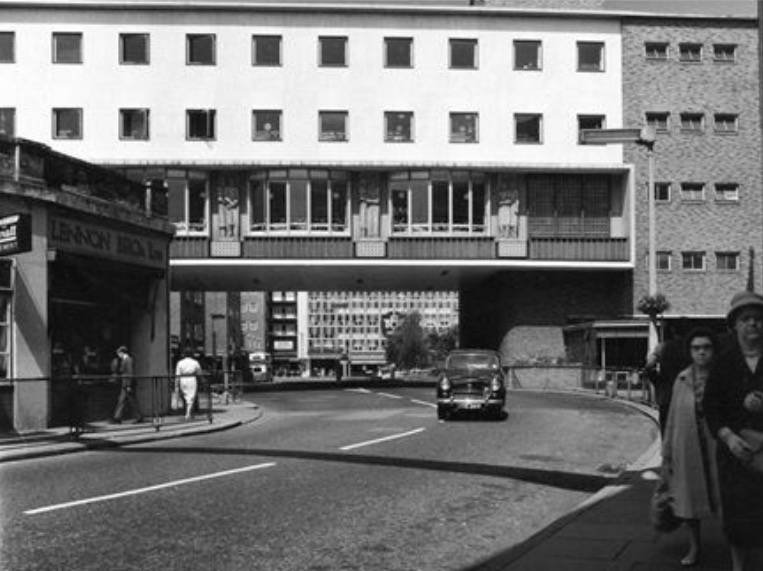
The People of Coventry by Trevor Tennant

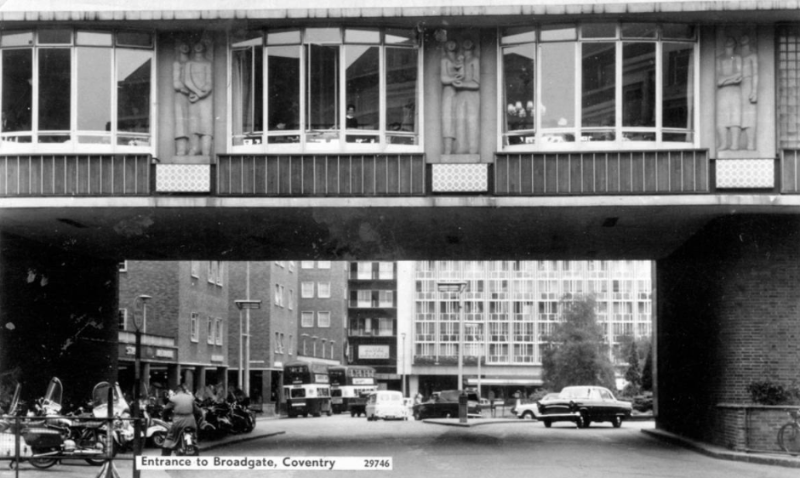
The People of Coventry’ (4 works of art) on the Hertford Street side of the Broadgate House Bridge by Trevor Tennant.
The decision to commission Trevor Tennant to undertake this series of sculptures was taken by the City Council Planning and Redevelopment Committee on 24th October 1949, on the recommendation of Donald Gibson. Trevor submitted his ideas for the sculptures in November 1950 and the finished works were put in place in January 1953. Originally it was felt that the sculptures were placed in a good and effective setting, with a sense of integration between architecture and sculpture. However, a few years later the traffic that ran under the bridge was stopped when Hertford Street was pedestrianised. The space under the bridge was built in with a bank which came out into Herford Street. This meant that only two of the sculptures could be seen from ground level. Later with the added distraction of trees, poles and lights, few people are aware of their presence. Trevor was not very happy aboout this; he saw them as being placed too far from the people who they were made for.
Donald Gibson was also unhappy about the hiding of the sculptures.

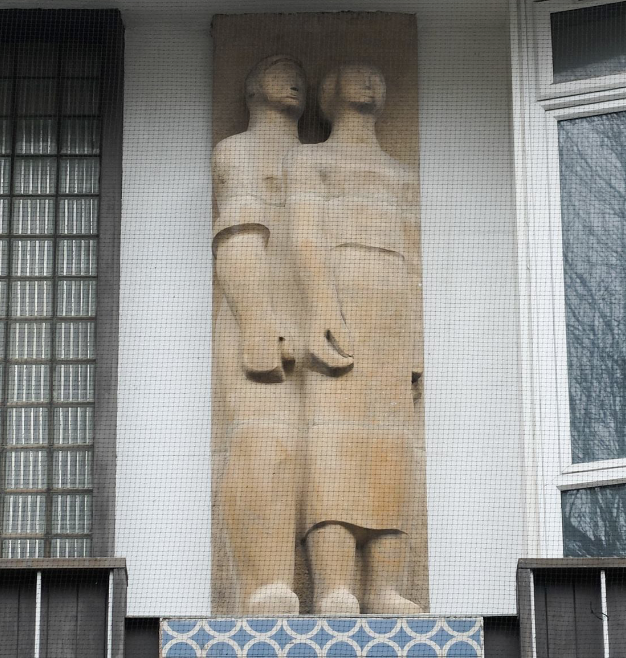
Treveor Tennant described the sculptures as – “A male and a female, personify creative maturity”.
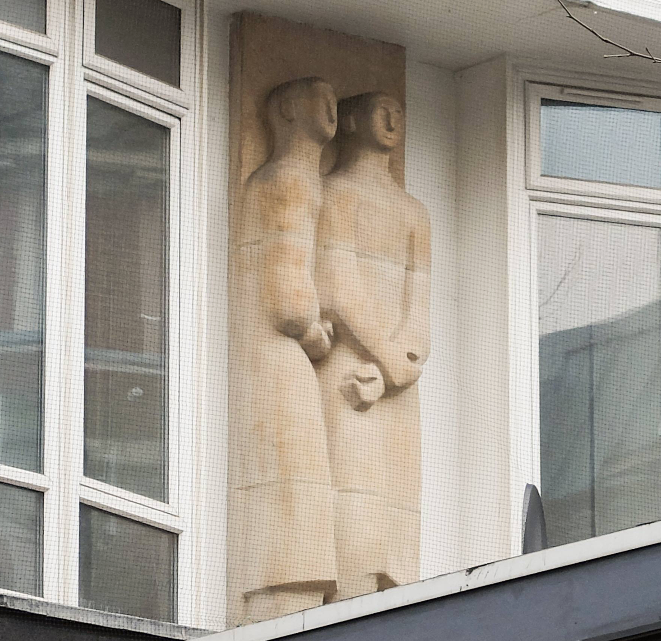
The two male figures personify planning and working.

The two figures, one female the other a male, both holding a child, personify the family.
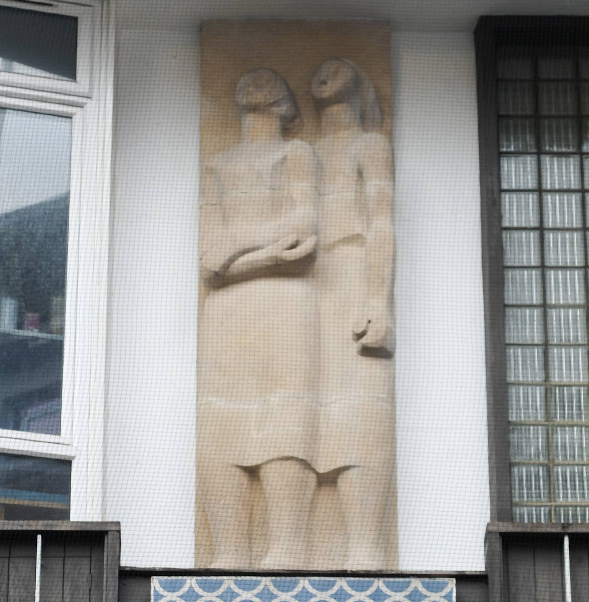
The two female figures personify youth and vitality. Each panel is 300cm high x 91cm wide and 46cm deep all made out of Doulting stone.
Tennant wrote about the sculptures in a letter: “These four groups carved in Doulting Stone, which is quarried near Shepton Mallet, are 10, feet, 6, inches high and 3, feet wide. Their aim is to express a timeless feeling of continuity, Citizens of a thousand years, today, and tomorrow.
“They are part of the structure of Broadgate House, the first block of the new re-development scheme in Coventry, and are placed about 15, feet apart across the front of the building, which is virtually a bridge, the main road from London running right through, directly underneath the carvings.
“This is probably unique in contemporary architecture and is the entrance to Broadgate, the centre of Coventry.
“The carvings are designed to be seen as one approaches from the south towards Broadgate, and are related to one another, and to the building as a complete composition. they are not yet all quite completed and the full effect will not be seen satisfactorily until the approaching road is widened, which is due to be done as part of the general scheme.
“The photograph shows the four carvings as they were placed while I roughed them out, on a bombed-site in Regents Park, they were then transported to Coventry, in sections, and built up with the face of the building, I am now completing them “in situ”.
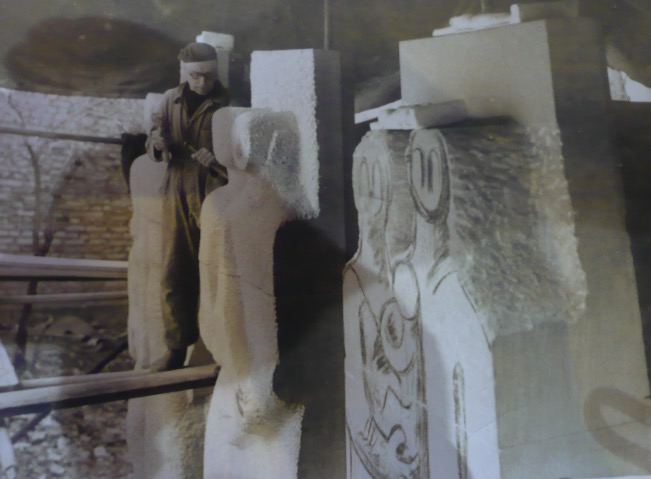
Trevor Tennant was following in the tradition and style of the day and it was felt that the figures of ‘The people of Coventry’ are very much in the style of Henry Moore and Jacob Epstein.
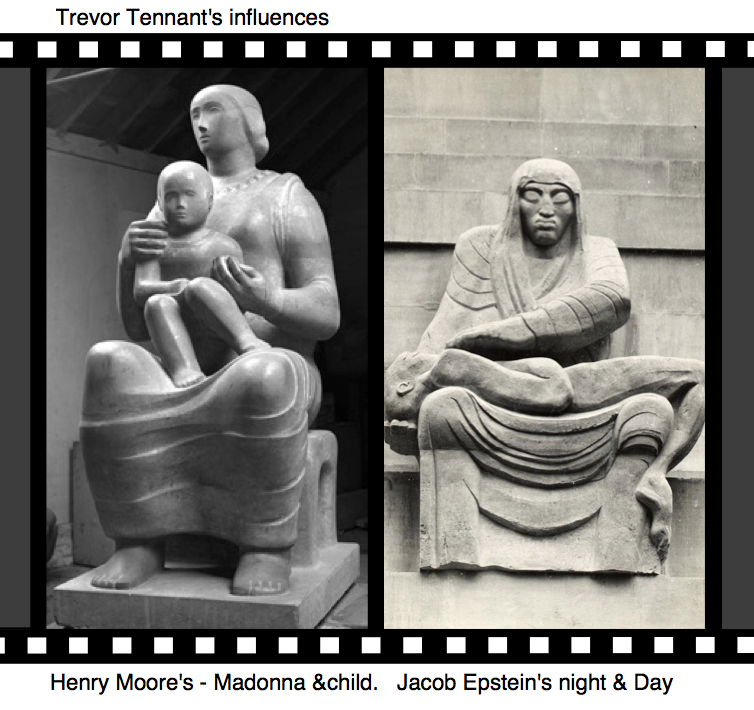
Trevor did a lot of other works of public art in Coventry, including the Lady Godiva clock (see Lady Godiva clock entry for further details including Trevor’s life).
His first job in Coventry was only a year after the end of the War. It was to carve ‘The Levelling Stone’ in the city precinct. It has a carved relief design of a Phoenix rising out of the ashes. It is mounted in the paved area in the centre of the Upper Precinct and was unveiled on the 8th June 1946. The work was commissioned by the Coventry Planning and Redevelopment Committee. This was the start of rebuilding the city after the destruction of the War (1939-1945). All architectural levels and readings are taken from the brass boss in the centre of the levelling stone.
